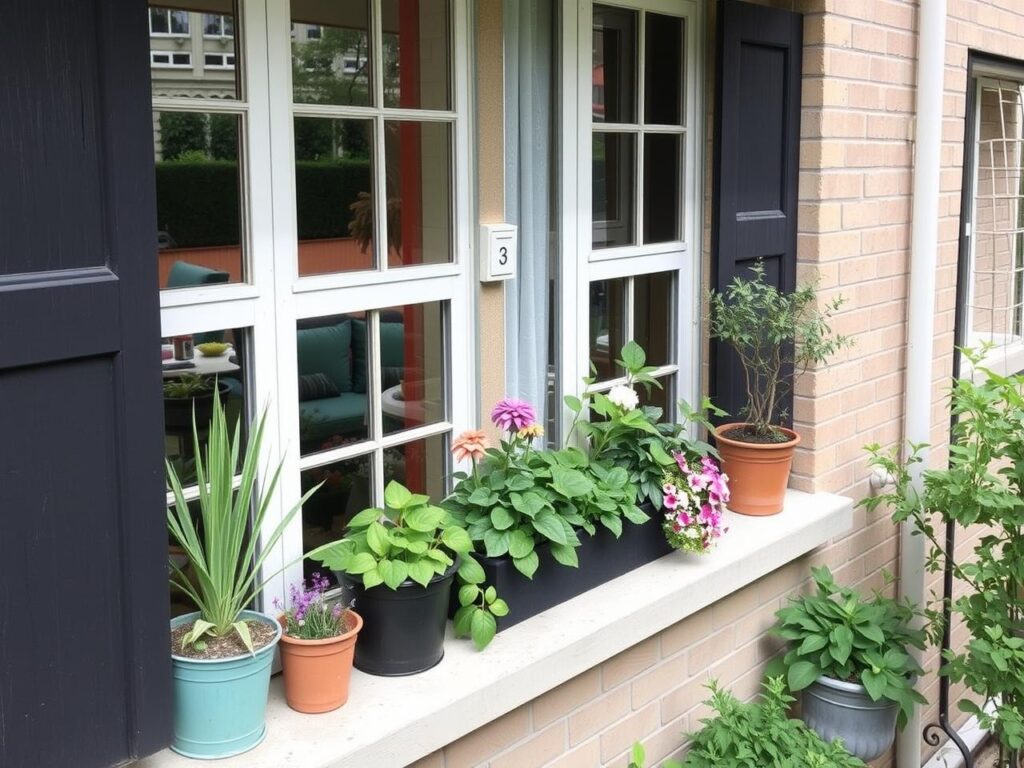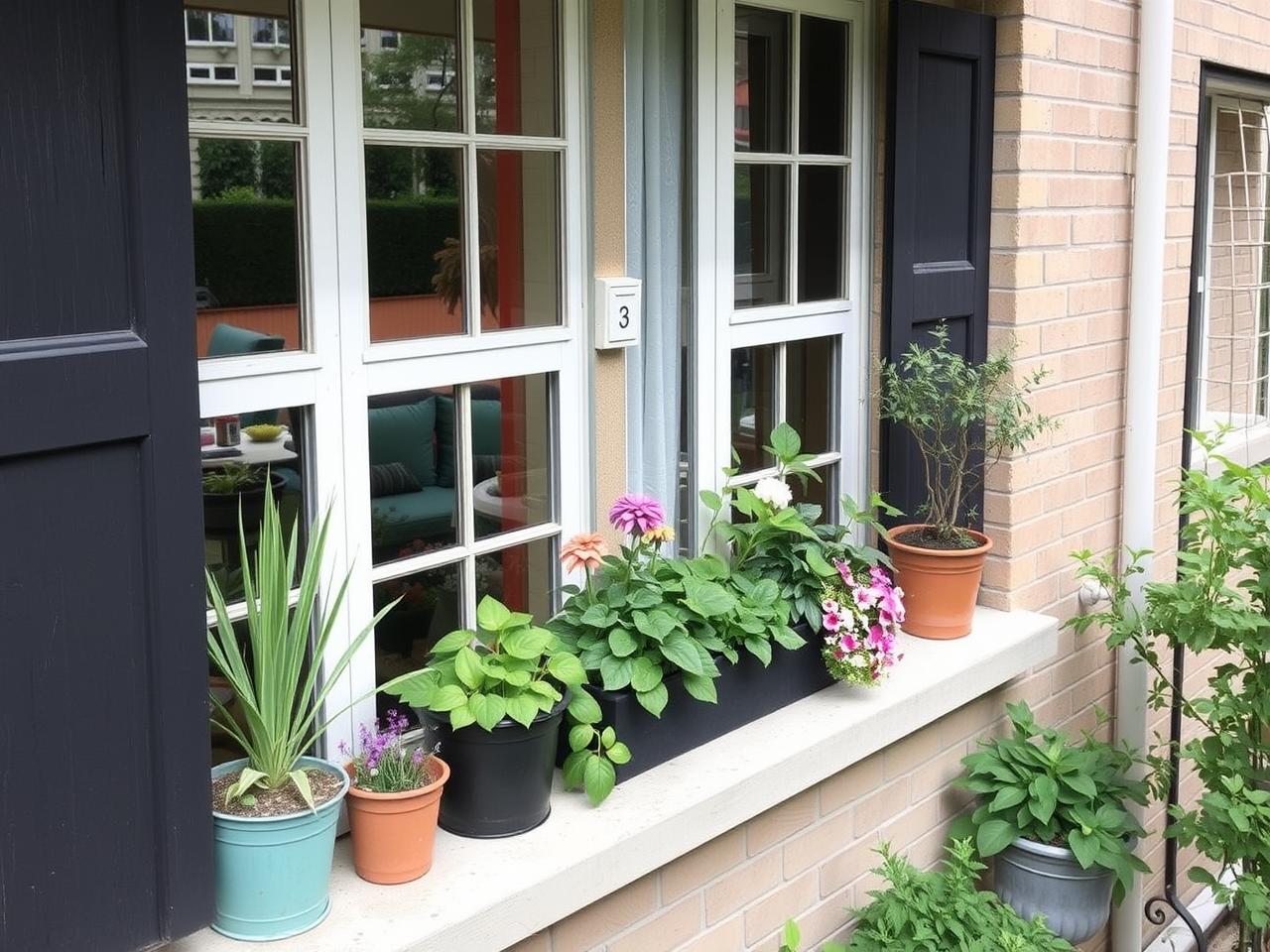Urban Gardening Hacks: Growing Fresh Produce in Small Spaces
Urban gardening requires careful selection of containers for optimal plant growth. Various options are available, including clay pots, plastic containers, fabric pots, and repurposed items like buckets and crates. Each container type has distinct advantages and disadvantages, necessitating consideration of plant requirements and available space.
Clay pots are popular for their aesthetic appeal and ability to regulate moisture and airflow. However, their weight and fragility make them less suitable for balconies or rooftops. Plastic containers offer lightweight durability, making them practical for small spaces.
Fabric pots provide excellent drainage and root aeration while remaining lightweight and portable. Repurposed items can be cost-effective but require proper drainage and food-safe materials for edible plants. The ideal container for an urban garden depends on plant needs, available space, and personal preferences.
Factors to consider include weight, durability, drainage, and aesthetics. Proper container selection contributes to the success of urban gardens, enabling the creation of thriving green spaces in urban environments.
Key Takeaways
- Choose containers that are suitable for the size of the plant and the space available
- Utilize vertical space by using hanging planters, trellises, and wall-mounted containers
- Balconies and windowsills can be used for growing herbs, small vegetables, and flowers
- Select plants that are compact, dwarf, or suitable for small spaces such as herbs, cherry tomatoes, and peppers
- Create a DIY irrigation system using drip irrigation or self-watering containers for efficient watering
- Incorporate companion planting to maximize space and deter pests
- Harvest and preserve fresh produce through canning, freezing, or drying for year-round enjoyment
Maximizing Vertical Space for Growing Plants

Utilizing Trellises and Hanging Planters
Trellises and hanging planters are two popular options for maximizing vertical space. Trellises provide support for climbing plants such as tomatoes, cucumbers, and beans, and can be easily installed against walls or fences. Hanging planters, on the other hand, can be suspended from balconies or ceilings, adding greenery without taking up valuable floor space.
Vertical Gardens: A Stunning Option
Vertical gardens, also known as living walls, are a stunning way to incorporate plants into urban environments. These structures can be custom-designed to fit any space and can be filled with a variety of plants to create a beautiful focal point.
Transforming Small Spaces into Lush Retreats
By utilizing trellises, hanging planters, vertical gardens, and shelving units, it’s possible to create a thriving garden in even the smallest of spaces. With a bit of creativity and ingenuity, urban gardeners can transform their outdoor areas into lush green retreats, perfect for relaxation and enjoyment.
Utilizing Balconies and Windowsills for Garden Space

For urban dwellers with limited outdoor space, balconies and windowsills offer valuable real estate for creating a garden oasis. With a bit of creativity and strategic planning, these small areas can be transformed into vibrant green spaces filled with herbs, flowers, and even vegetables. By utilizing vertical planters, railing boxes, and window boxes, urban gardeners can make the most of their balconies and windowsills to enjoy the beauty and bounty of nature right outside their doors.
Vertical planters are an excellent way to maximize space on balconies and windowsills, allowing plants to grow upwards instead of outwards. These planters can be attached to walls or railings, providing a vertical garden that doesn’t take up valuable floor space. Railing boxes are another great option for balconies, allowing for the addition of flowers or herbs without sacrificing space.
Window boxes are a classic choice for windowsills, adding charm and color to any urban dwelling while providing a place to grow herbs or small flowering plants. In conclusion, balconies and windowsills offer valuable opportunities for urban gardeners to create beautiful green spaces in the midst of city living. By utilizing vertical planters, railing boxes, and window boxes, it’s possible to make the most of these small areas and enjoy the beauty of nature right outside your door.
Selecting the Best Plants for Small-Space Gardening
When it comes to small-space gardening in urban environments, selecting the right plants is essential for success. Not all plants are well-suited for growing in containers or small gardens, so it’s important to choose varieties that are compact, productive, and well-suited to the specific conditions of your space. By selecting the best plants for small-space gardening, urban gardeners can enjoy a bountiful harvest without taking up valuable outdoor real estate.
Herbs are an excellent choice for small-space gardening, as they are compact and can thrive in containers on balconies or windowsills. Basil, mint, parsley, and chives are just a few examples of herbs that are well-suited for small gardens. Cherry tomatoes and peppers are also great options for container gardening, providing a bountiful harvest in a compact space.
Lettuce and other leafy greens can be grown in shallow containers or window boxes, making them ideal for small gardens with limited soil depth. In conclusion, selecting the best plants for small-space gardening is essential for urban gardeners looking to make the most of their limited outdoor areas. By choosing compact and productive varieties such as herbs, cherry tomatoes, peppers, and leafy greens, it’s possible to enjoy a bountiful harvest without sacrificing valuable outdoor real estate.
Creating a DIY Irrigation System for Urban Gardens
In urban environments where water access may be limited or restricted, creating a DIY irrigation system is essential for keeping plants healthy and thriving. There are several simple and cost-effective methods for providing water to container gardens and small outdoor spaces, including drip irrigation systems, self-watering containers, and rainwater harvesting. By implementing an efficient irrigation system, urban gardeners can ensure that their plants receive the water they need to flourish without wasting this precious resource.
Drip irrigation systems are an excellent choice for urban gardens, providing a slow and steady supply of water directly to the roots of plants. These systems can be easily installed in containers or raised beds and can be connected to a timer for automated watering. Self-watering containers are another great option for urban gardeners, as they provide a reservoir of water that allows plants to draw moisture as needed.
This can be especially helpful in hot or dry climates where regular watering may be challenging. Rainwater harvesting is also an effective way to provide water for urban gardens, allowing gardeners to collect and store rainwater in barrels or tanks for later use. In conclusion, creating a DIY irrigation system is essential for urban gardeners looking to keep their plants healthy and thriving in small outdoor spaces.
By implementing methods such as drip irrigation systems, self-watering containers, and rainwater harvesting, it’s possible to provide plants with the water they need while conserving this precious resource.
Incorporating Companion Planting for Efficient Use of Space

Optimizing Vertical Space
One common example of companion planting is pairing tall-growing plants with low-growing ones to make efficient use of vertical space. For instance, planting tall sunflowers or corn alongside low-growing squash or beans allows both types of plants to thrive without competing for space.
Repelling Pests and Attracting Beneficial Insects
Another example is planting aromatic herbs such as basil or mint alongside vegetables to help repel pests and attract beneficial insects.
Improving Soil Fertility and Plant Health
Additionally, planting nitrogen-fixing legumes such as peas or beans alongside heavy-feeding crops like tomatoes or peppers can help improve soil fertility and overall plant health.
In conclusion, incorporating companion planting is an effective way for urban gardeners to make efficient use of limited outdoor spaces while promoting healthy plant growth. By strategically pairing compatible plants together based on their growth habits and beneficial interactions, it’s possible to create thriving gardens that make the most of every inch of available space.
Harvesting and Preserving Fresh Produce from Urban Gardens
After all the hard work of planning, planting, and tending an urban garden, the reward comes in the form of fresh produce ready for harvest. However, in small-space gardens where yields may be limited, it’s important to make the most of every harvest by preserving excess produce for future use. There are several methods for preserving fresh produce from urban gardens, including freezing, canning, pickling, drying, and fermenting.
By utilizing these preservation techniques, urban gardeners can enjoy the fruits of their labor long after the growing season has ended. Freezing is a simple and convenient way to preserve excess produce from urban gardens. Many fruits and vegetables can be frozen without blanching and stored for several months in airtight containers or freezer bags.
Canning is another popular preservation method that allows urban gardeners to enjoy their homegrown produce year-round. Whether it’s making jams and jellies from berries or pickling cucumbers from the garden, canning is a great way to preserve excess fruits and vegetables. Pickling is another popular preservation method that allows urban gardeners to extend the shelf life of their produce while creating delicious condiments and snacks.
Drying is an ancient preservation method that works well for herbs, fruits like apples or tomatoes when turned into sun-dried tomatoes. Fermenting is another method that not only preserves produce but also enhances its nutritional value through the process of lacto-fermentation. In conclusion, harvesting and preserving fresh produce from urban gardens is essential for making the most of limited yields while enjoying homegrown fruits and vegetables year-round.
By utilizing methods such as freezing, canning pickling drying fermenting it’s possible to enjoy the bounty of an urban garden long after the growing season has ended.
FAQs
What is urban gardening?
Urban gardening refers to the practice of growing plants, fruits, and vegetables in urban environments such as cities and towns. It often involves utilizing small spaces such as balconies, rooftops, and small yards for gardening.
What are some benefits of urban gardening?
Urban gardening allows city dwellers to have access to fresh produce, promotes sustainability, reduces food miles, and provides a source of physical activity and stress relief. It also contributes to a greener and more aesthetically pleasing urban environment.
What are some common challenges of urban gardening?
Limited space, lack of sunlight, poor soil quality, and potential pest and pollution issues are common challenges faced by urban gardeners. Additionally, access to water and the need for creative solutions for gardening in unconventional spaces can be challenging.
What are some urban gardening hacks for growing fresh produce in small spaces?
Some urban gardening hacks include using vertical gardening techniques, utilizing hanging planters, growing plants in containers, choosing compact or dwarf varieties of plants, and making use of windowsills and other small spaces for gardening. Additionally, using raised beds and incorporating companion planting can maximize space and yield.






